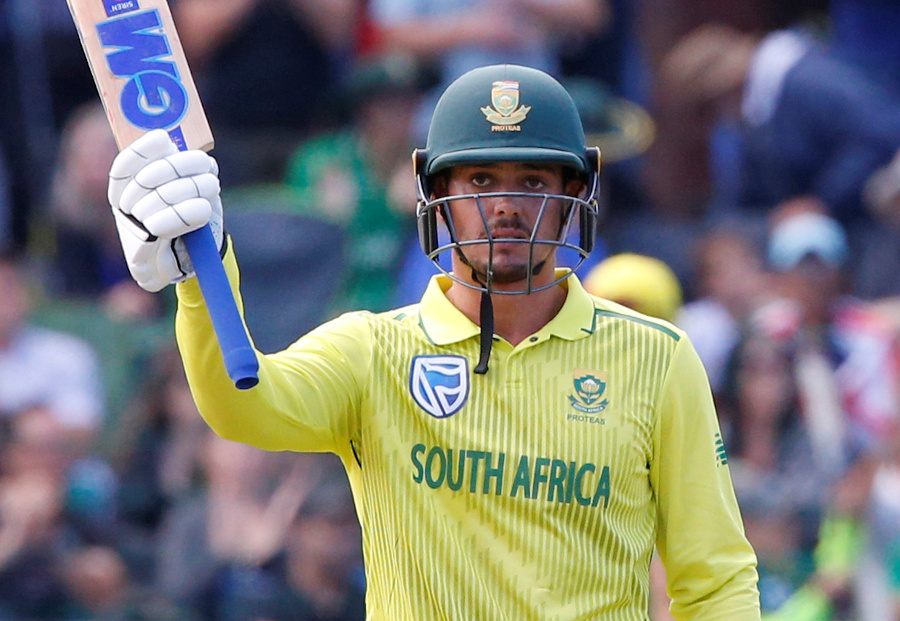South Africa did not a send out a strong signal for their hopes of competing for the World T20 crown at the end of the year, suffering back-to-back home series defeats to England and Australia. Quinton de Kock’s side were rocked by their rivals, displaying a lack of nous and experience in vital moments of matches.
There will not be an easy cure for their problems heading into the World T20, where they will be desperate to make a more decisive impact than in the 50-over tournament where the Proteas were eliminated at the group stage.
South Africa are blooding new talent in their batting ranks to cope with the mass exodus in recent years, but it will take time for them to find their form at the highest level. Even the bowling ranks have been affected by injuries, notably involving Dale Steyn.
It leaves their hopes of competing for the crown slim behind the elite teams of England, Australia, India, the plucky sides of Pakistan, and the holders – the West Indies. South Africa do not have a great record in the World T20, reaching the semi-final stage only twice. Therefore, it will take a special effort for De Kock to be lifting the trophy come the end of the year down under.
How the Proteas could win the World T20
A return of AB de Villiers could turn the Proteas from underdogs to one of the leading contenders for the World T20 title. De Villiers retired from all forms of international cricket in May 2018, but the 36-year-old has suggested that he could be lured back to compete in the tournament. His presence alone may get punters eyeing up South Africa betting sites to monitor the odds hoping for a victory for the country, such is his talent.
There are a number of intriguing offers and a boost provided by one of the finest cricketers produced by the rainbow nation. De Villiers helped define the shortest format with his outrageous shots. His experience would also be vital to settle down a largely inexperienced side as well as providing De Kock with another authoritative voice on the field.
De Kock himself is one of the leading players in T20 in the world. A strong tournament from the 27-year-old could launch the Proteas into the latter stages. At the peak of his power, he is capable of dismantling the best bowling attacks in the competition, although anything other than his best without De Villiers in the line-up may not be enough for his team.
The Proteas do have a ferocious pace attack on their side. Kagiso Rabada has been derailed injuries over the last year but, at his best, he is arguably the leading fast bowler in the world. Lungi Ngidi has been on the rise and is only going to get better with more cricket under his belt. Steyn could be the key, especially in Australia – the land of the quick. His style of bowling suits the country to the ground and the importance of a world-class strike bowler could be the difference between winning and losing key matches.
Why the Proteas could struggle
South Africa have displayed a propensity over the years to struggle in pressurised situations. Major tournaments have not been their friend, notably the 1999 and 2003 50-over World Cups. Their experiences at the World T20 have not been overly brilliant, suffering a seven-run defeat at the hands of Pakistan in 2009 and a six-wicket loss against India in 2014. Those issues were evident in their close matches against England, failing to close out the series in a two-run loss in Durban before being dismantled by Eoin Morgan at Centurion. They cannot afford to lose their composure in the World T20, and although the loss to England was disappointing, it would have provided Ngidi among others with a vital learning experience ahead of the competition.
Ashton Agar’s bowling figures in Australia’s recent T20I series against South Africa:
Overs: 1️⃣2️⃣
Runs: 6️⃣8️⃣
Wickets: 8️⃣
Average: 8️⃣.5️⃣0️⃣
Economy rate: 5️⃣.6️⃣6️⃣#SAvAUS pic.twitter.com/FmJSvKIrdN— Cricket 22 Yards (@Cricket22Yards) February 28, 2020
Australia exposed weaknesses in the Proteas’ batting unit. It showed that, when De Kock failed to fire at the top of the order, his team were not up to the task around him, being dismissed for 89 and 96 in their two defeats to the Aussies. They were skittled twice, not only by the pace of Mitchell Starc and Pat Cummins, but also the spin Ashton Agar – who, with all due respect, is not a player that will strike fear into the hearts of most batting line ups.
Outside of the top three of De Kock, Rassie van der Dussen, and Faf du Plessis there is not a lot of proven quality. Heinrich Klaasen has shown ability in limited action, while Temba Bavuma was available to face Australia. Their inclusion could bolster the depth in the ranks, but there is not the talent all the way down the unit that England and India boast. It’s a huge concern for the Proteas in their bid to compete in the latter stages, highlighting an issue that could take significant time to improve.







